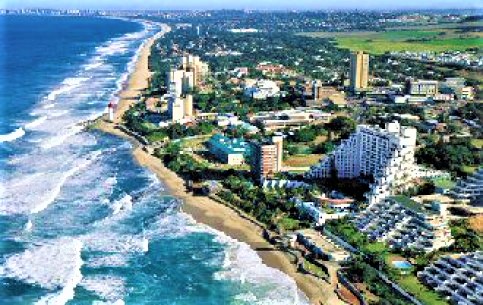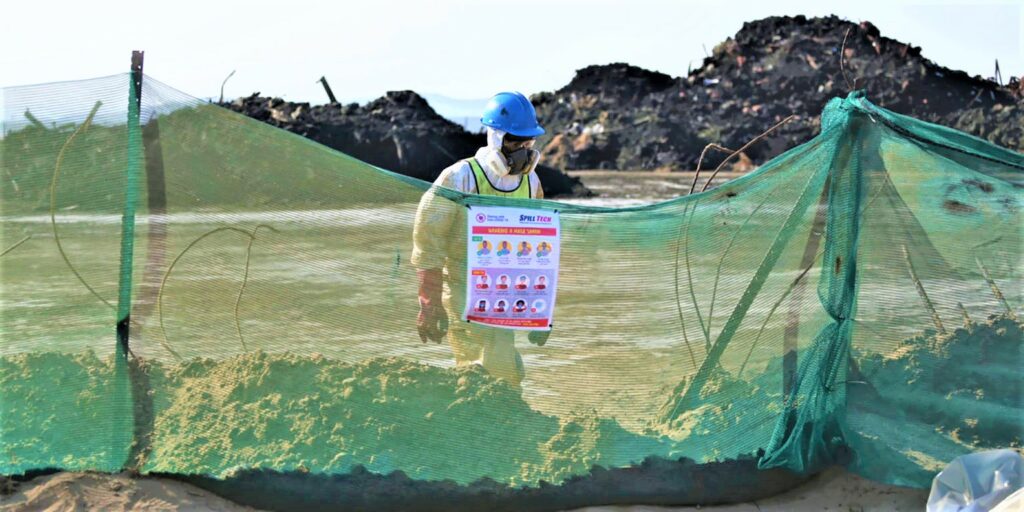Live to Eat and Eat to Die
ENVIRONMENT, 30 Aug 2021
Prof. Hoosen Vawda – TRANSCEND Media Service
But There Is No Time to Die, There Is Just Enough Time to Suffer
Hail the Intestinal Microbiome
26 Aug 2021 – The man of the house arrives home from a day’s work, in a high-end new car sales company, after successfully concluding the sale of a luxury German marque. His schoolteacher, wife, delightedly informs him that she has prepared his favorite supper of roast chicken, served with a range of vegetables and pasta. The husband is pleased and informs the lady of his successful sale. He has a shower and returns to the dining room sitting himself at the head of the table, with the lovely bustle back, antique reproduction chair creaking, says Grace and proceeds with his supper, with his wife dishing out a generous portion to be eaten, with a white sauce. What the wife did not tell her husband that she has prepared all the items, which were frozen and that the entire dish was cooked from genetically modified, edibles.
This is a common scenario in most middle-income households, today, globally, depending on whether the household is vegetarian, omnivorous or the family is predominantly composed of carnivores. Furthermore, the couple did not know that the food they were relishing, is also farmed using some of the most potent herbicides, pesticides, insecticides and fertilisers to increase the crop yield. The frozen vegetables, from the deep freezer, were grown using genetically modified organism, patented seeds and the large, tender roast chicken was nurtured in congested sheds, in which the chickens are literally so fat that they can barely walk a few steps before they sit down[1].
This is due to their abnormally and artificially increased body mass, being fed with poultry feed containing, growth stimulating hormones[2], anabolic steroids[3] and equivalents. In addition, their 8-year-old daughter has obesity, sprouting a moustache and has developed facial hair. The parents have also been informed that she has early signs of Polycystic Ovarian Syndrome[4], by the attending, paediatric endocrinologist. The parents are spending an inordinate amount of their medical insurance funds having the child attended to medically. The couple are unaware that the food they have been consuming has disturbed their gut microbiomes[5] from the toxic effects of all the chemicals in the food eaten, not only in their bodies but also that of their daughter, as well. Needless to note that the lady is expecting their second child and the possibility of the foetus having congenital anomalies[6] may be quite high in view of the exposure to all the aforementioned, ingested toxins.
There are numerous challenges to the all-important human, as well as animal intestinal microbiomes, in the 21st Century. Recent scientific evidence adds to the state of ever-increasing knowledge of the gut microbiome as a causative factor in the pathogenesis of both congenital and acquired diseases affecting humanoids, including communicable and non-communicable lifestyle diseases. The intestinal microbiome is considered an extremely important element in human wellness and health excellence. While there is active research in progress in this field of human health, it is not the scope of this report to delve into the scientific fantasy of the intestinal microbiome, but to highlight the chemicals we are ingesting in the food we eat.
Whenever and wherever “genetically modified organism[7],” or GMO, is mentioned there is immediately a polarised reaction. There are the protagonists, who have concluded that it is the only technology to feed the malnourished world, while the antagonists are ever warning against the use of his apparently, new 2oth Century technology to feed the current global population of 7,577,130,400[8] people of the ever-abused planet Earth.
Humanoids have been genetically changing organisms since we first started domesticating them around 12,000 BC. This was attempted so that favorable traits were identified in one generation of plants or animals, such as higher fertility, bigger size, faster maturity, greater resistance to pests and diseases and those specimens were selectively bred to produce the next generation, with such preferred attributes. This practice was formally researched in laboratories, creating plant seeds which have superior qualities and were subsequently patented by multinational agricultural companies, for profits, in commercial farming, globally.
However, the concept was originally studied by Charles Darwin[9] published against much controversy at the time in 1858 as “The Origin of Species”[10]. His proposition that all species of life have descended from common ancestors is now widely accepted and considered a fundamental concept in science.[11] Therefore, humans have been genetically modifying other living things for millennia[12]. The basic difference in the 21st Century, is that scientists are using tools to modify genomes. Presently, the researchers can genetically modify organisms not only through selective breeding on the farm, but more importantly by genetic engineering, the through molecular techniques in the high-tech laboratories.
The development and availability of this technology has radically changed the pace of genetic modification. Presently, it is not necessary to breed a particular specimen for desired traits over many generations, because it possible to directly insert genes to change genomes in only one generation. The technology is now so refined by advances, that it is possible to transfer genes across species. Scientist have created the GloFish[13], by extracting a gene originally from a jellyfish which a produces a bright green, fluorescent colour, inserted into a Zebrafish[14] and produced the neon looking GloFish, which is the first genetically engineered pet, patented fish, in the world. Humanoids have come a long way from Mendel[15] to Monsanto.
One such company which has successfully commercialised genetic engineering is Monsanto[16] It is a multinational agricultural company with a presence in South Africa, as well, in Sandton, Gauteng, South Africa and is part of the other nonmetallic mineral product manufacturing industry.[17] The Monsanto Corporation has long been at the forefront of genetic engineering when it comes to the plants we eat. They have been applauded as well as criticized for their global activities in the general field of agricultural products. Some analysts are of the opinion that Monsanto are leaders in finding new agricultural technologies to feed a growing global population, while others have criticised them for producing “franken-foods”[18] which wreak havoc on the environment and our bodies by having toxic effects on our gut microbiomes. The term Frankenfood comes from the novel Frankenstein by Mary Shelley[19], relating genetically modified foods to the monster, Frankenstein, as created. In order for these so called “Frankenfoods” to be created, the DNA of the food needs to be manipulated. This usually involves either the insertion or deletion of specific genes within the genetic coding.
Monsanto also developed and sold recombinant bovine somatotropin (rBST[20] and rBGH), a synthetic hormone that increases milk production by 11–16% when injected into cows.[21]In October 2008, Monsanto sold this business to Eli Lilly for $300 million plus additional considerations.[22] The use of rBST remains controversial with respect to its effects on cows and their milk, as well as humans.[23] In some markets, milk from cows that are not treated with rBST is sold with labels indicating that it is rBST-free: this milk has proved popular with consumers.[24] Locally, in South Africa, the author, finding many little girls with moustaches, has launched an enquiry with major dairies, including Woolworths Food Hall[25], to establish if recombinant bovine somatotropin is used in cows from which their milk is sourced.
Another challenge is the use of antibiotics in salmon aquaculture, which is an ever-increasing market, in South Africa. This results in antibiotic resistance and is borne out when SARS Cov-2 patients with lower respiratory tract infections are not responding to very potent antibiotics.[26]
However, the Monsanto Company was an American agrochemical and agricultural biotechnology corporation founded in 1901 and headquartered in Creve Coeur, Missouri. Monsanto’s best-known product is Roundup, a glyphosate-based herbicide, developed in the 1970s. Later the company became a major agribiotech producer of genetically engineered crops. In 2018, the company ranked 199th on the Fortune 500 of the largest United States corporations by revenue.[27]
In 2012 a French court found Monsanto guilty of chemical poisoning of a farmer who reported suffering neurological problems after using one of the company’s herbicides. In September 2016, Monsanto (current owner of MiracleGro[28]), agreed to be acquired by Bayer for US$66 billion.[29] Monsanto’s bestselling agrochemical, “Roundup” and its key ingredient, glyphosate, have been linked to several types of cancer, including non-Hodgkin’s lymphoma, b-cell lymphoma and leukemia, as well as Parkinson’s Disease[30]. As a result, thousands of people have filed lawsuits claiming the popular weed killer caused them to develop cancer. Glyphosate, the weed-killing active ingredient in Roundup, stands at the center of these lawsuits. Court proceedings in some of the earliest Roundup trials revealed close interactions between Monsanto, the manufacturer of Roundup and the Environmental Protection Agency[31] (EPA), with irregularities.[32] These interactions have cast doubt on the EPA’s glyphosate rulings[33]. Internal Monsanto documents also demonstrate repeated attempts, some successful, to manipulate published scientific studies and media reports in favor of glyphosate safety.
In 2020 Bayer[34], who acquired the company, agreed to pay $10 billion to settle thousands of lawsuits alleging that Roundup causes cancer.[35] Monsanto was sued and settled multiple times for damaging the health of its employees or residents near its Superfund sites[36] through pollution and poisoning.[37] There is extensive literature, documentaries[38], interviews and reports on the internet with reference to Monsanto and its agricultural history in terms of different chemical used by the industry, globally.[39]
Presently, let us shift the focus to Durban, South Africa and the recent UPL warehouse fire caused by rioting African arsonists, which took ten days to douse and explosions. The subsequent fallout from air and water pollution, with death and contamination of sea life in Ohlange River[40], north of Durban in July 2021, has been reported by the author[41] Recent reports indicate that it could take years for the natural resources that were destroyed during the burning of the United Phosphorus Limited (UPL) warehouse in Cornubia, north of Durban, during the July unrest, to be restored to their former state. Chemicals at the warehouse had gone up in smoke, and water used to battle the blaze ran off into nearby water channels and water sources, resulting in dead fish littering the Ohlange lagoon and estuary, while some contaminants reached a freshwater stream, resulting in dead freshwater creatures and vegetation. The underground water is also contaminated.[42]
According to a local, highly respected newspaper, The Daily News, as reported by Thobeka Ngema[43], an alleged United Phosphorus Limited list which shows the number of chemicals at the company’s warehouse in Cornubia, north of Durban, incinerated, during the recent week-long civil unrest has been leaked to the newspaper.[44]
The newspaper is in possession of the leaked document obtained from highly placed sources, however the company has yet to confirm or acknowledge it. The company has still not responded to questions despite being given an opportunity to do so on several occasions. The list, called “UPL Cornubia FINAL Product Volumes and Classification 05-08-2021”[45], is also marked “privileged and confidential”. It has 724 products on it, including herbicides, insecticides, surfactants, biocides, reactants, adjuvants, fungicides, markers, dyes, seed treatments, fumigants, antifoam, plant nutrition, solvents and sterilisers. Some of the products include atrazine, chlorpyrifos, deltamethrin, cypermethrin, dicamba, paraquat, ammonium acetate, glyphosate and dimethoate. The names are familiar of these highly toxic chemicals, which have been released into the environment either as toxic fumes or together with the run-off water used by the firefighting services to extinguish the blaze. Research abroad has revealed that these chemicals can cause short, medium as well as long-term health effects. Acute effects include stinging eyes, rashes, blisters, blindness, nausea, dizziness, diarrhoea and death, while chronic effects include cancers, birth defects, reproductive harm, and neurological and developmental toxicity, not only according to the report in the print media, by investigative journalists, Susan Comrie, Thabo Makwakwa[46] and Dewald van Rensburg with whom the author has communicated about the human caused environmental and health catastrophe.
The most important aspect is that the UPL company has not officially released the manifesto of chemicals in the warehouse, indicates some reluctance to do so and the local regulatory authorities need to obtain legal mandates to obtain the full list, officially if it does not have the power to obtain the list.
The Bottom Line is that the UPL chemicals, which contaminated the regional atmosphere, as well as the adjoining land and the pristine waters of the upmarket Durban north suburb of Umhlanga[47], by the very chemicals which were prominently featured in the multitude of legal suits mounted against the Monsanto Company as documented. The most important point is that these chemicals were not stored at UPL warehouse for no good reason. These toxic chemicals, including glyphosate, were either imported or manufactured locally and sold to subsidiaries for use in the general field of agriculture, including the highly lucrative and prestigious wine farming, in South Africa[48]. Japan’s Chiba University now finds exposure to glyphosate can also contribute to development of Parkinson’s Disease, a progressive and neurodegenerative brain disease impacting motor function that affects 1 million Americans[49].
These extremely toxic chemicals are being indirectly ingested by consumers locally and abroad, unknown to the “eaters” who if, they “do not have time to die”, presently, will certainly have the time to suffer effects of ill health, in the future. The present situation, following the UPL warehouse[50] environmental catastrophe, locally, is like the people globally exposed to Monsanto chemicals. It is also to be noted that some of these chemicals are totally banned abroad, but not here in South Africa. Hopefully, the South African Parliament’s Portfolio Committee on Environment, Forestry and Fisheries[51], who visited the affected area in Durban, earlier, to assess the environmental impact of the warehouse fire. will complete its preliminary report by the end of the month and provide recommendations, including the banning of some of the listed toxic chemicals, available locally for agricultural use, in South Africa. This report, as the author anticipates, will, if comprehensive will also answer the question “if UPL has obtained favorable regulations at the expense of consumer safety, in South Africa”?
References:
[1] https://www.youtube.com/watch?v=GB4flBxNpuc
[2] https://academicjournals.org/journal/AJB/article-full-text-pdf/760D84F31753
[3] https://www.drugabuse.gov/publications/drugfacts/anabolic-steroids
[4] https://www.mayoclinic.org/diseases-conditions/pcos/symptoms-causes/syc-20353439
[5] https://www.sciencedirect.com/topics/medicine-and-dentistry/gut-microbiome
[6] https://www.cdc.gov/ncbddd/birthdefects/surveillancemanual/chapters/chapter-1/chapter1-4.html
[7] https://www.nationalgeographic.org/encyclopedia/genetically-modified-organisms/
[8] https://www.bing.com/search?q=what+is+the+earth%27s+population&FORM=AWRE
[9] https://en.wikipedia.org/wiki/Charles_Darwin
[10] Coyne, Jerry A. (2009). Why Evolution is True. Oxford: Oxford University Press. p. 17. ISBN 978-0-19-923084-6. In The Origin, Darwin provided an alternative hypothesis for the development, diversification, and design of life. Much of that book presents evidence that not only supports evolution but at the same time refutes creationism. In Darwin’s day, the evidence for his theories was compelling but not completely decisive.
[11] Coyne, Jerry A. (2009). Why Evolution is True. Viking. pp. 8–11. ISBN 978-0-670-02053-9.
[12] https://www.darwins-theory-of-evolution.com/
[13] https://en.wikipedia.org/wiki/GloFish
[14] https://en.wikipedia.org/wiki/Zebrafish
[15] https://en.wikipedia.org/wiki/Gregor_Mendel
[16] http://america.aljazeera.com/watch/shows/techknow/articles/2014/5/2/inside-monsanto.html
[17] https://www.bloomberg.com/profile/company/0322156D:SJ
[18] https://www.bing.com/search?q=%22Franken+Foods%22&cvid=31cf14380dcd41fa8a08cb538ead59a5&aqs=edge..69i57j0l6.6552j0j1&pglt=43&FORM=ANNTA1&PC=U531
[19] https://en.wikipedia.org/wiki/Frankenstein
[20] https://www.cancer.org/cancer/cancer-causes/recombinant-bovine-growth-hormone.html
[21] Dohoo, I. R.; Descôteaux, L.; Leslie, K.; Fredeen, A.; Shewfelt, W.; Preston, A.; Dowling, P. (2003). “A meta-analysis review of the effects of recombinant bovine somatotropin. 2. Effects on animal health, reproductive performance, and culling”. Canadian Journal of Veterinary Research. 67 (4): 252–264. PMC 280709. PMID 14620861.
[22] “Eli Lilly to Buy Monsanto’s Dairy Cow Hormone for $300 million – DealBook Blog”. The New York Times. August 20, 2008.
[23] Dobson, William D. (June 1996) The BST Case. University of Wisconsin-Madison Agricultural and Applied Economics Staff Paper Series No. 397
[24] Fighting on a Battlefield the Size of a Milk Label, The New York Times, March 9, 2008
[25] https://www.woolworths.co.za/cat/DailyDifference/Food-Cupboard/_/N-akhueZ1lw4dzx?No=0&inv=0
[26] https://www.cdc.gov/drugresistance/about/how-resistance-happens.html#:~:text=Resistance%20Mechanisms%20%28Defense%20Strategies%29%20%20%20%20Resistance,that%20av%20…%20%201%20more%20rows%20
[27] https://en.wikipedia.org/wiki/Monsanto
[28] https://en.wikipedia.org/wiki/Miracle_Gro
[29] https://www.wsj.com/articles/bayers-all-cash-offer-values-monsanto-at-62-billion-1463981986
[30] https://pubmed.ncbi.nlm.nih.gov/30799335/
[32] https://www.consumersafety.org/product-lawsuits/roundup/#:~:text=A%20Roundup%20class%20action%20lawsuit%20was%20filed%20in,stated%20that%20Roundup%20products%20were%20safe%20to%20use.
[33] https://www.epa.gov/ingredients-used-pesticide-products/glyphosate
[34] https://www.bayer.com/en/history
[35] https://www.google.com/search?gs_ssp=eJzj4tFP1zcsqCrJMCooMzNgtFI1qDBMtTQ1N0tKSk00NTC1SDS0MqhISU1LsjBLMUi1NDGwSLVM9RLNzc8rTswryVcozi8tyVBITCvKTE4EAGzIGBE&q=monsanto+south+africa&rlz=1C1PNBB_enZA933ZA933&oq=monsanto&aqs=chrome.2.69i57j46i67i131i199i433i465j46i175i199i512j0i512l3j46i512j0i512l3.19187j0j7&sourceid=chrome&ie=UTF-8
[36] https://en.wikipedia.org/wiki/Superfund
[37] “Monsanto Held Liable For PCB Dumping”. The Washington Post. February 22, 2002. Archived from the original on April 2, 2015.
[38] https://www.youtube.com/watch?v=yh8c9OUti4c
[39] https://www.britannica.com/topic/Monsanto#:~:text=Monsanto%20began%20producing%20aspirin%20in%201917.%20Like%20many,his%20son%2C%20Edgar%20M.%20Queeny%20%281897%E2%80%931968%29%2C%20in%201928.
[40] https://umhlangatourism.co.za/2020/08/11/umhlanga-lagoon-delight-in-the-details/#:~:text=Umhlanga%2C%20as%20we%20know%2C%20gets%20its%20name%20from,river%20reeds%20%28Phragmites%20australis%29%20and%20bullrushes%20%28Typha%20capensis%29.
[41] https://www.transcend.org/tms/2021/08/global-industrial-fires-explosions-environmental-pollution-and-human-suffering/
[42] https://www.iol.co.za/dailynews/news/kwazulu-natal/it-could-take-years-for-natural-resources-to-recover-from-upl-fire-9015cb86-61b2-48f2-a1f9-c42fb0078798
[43] https://za.linkedin.com/in/thobekangema
[44] https://www.iol.co.za/dailynews/news/kwazulu-natal/list-of-chemicals-razed-in-durban-factory-during-looting-leaked-but-firm-remains-tight-lipped-4b2393bd-367b-4f1e-8889-f618595e5a05
[45] https://www.iol.co.za/dailynews/news/kwazulu-natal/list-of-chemicals-razed-in-durban-factory-during-looting-leaked-but-firm-remains-tight-lipped-4b2393bd-367b-4f1e-8889-f618595e5a05
[46] https://za.opera.news/za/en/politics/59fdf151be858730076e34c8307ea300
[47] https://umhlangarockstourism.co.za/
[48] https://thepuristonline.com/2019/07/is-your-wine-full-of-toxins/
[49] https://non-gmoreport.com/glyphosate-linked-to-parkinsons-disease/#:~:text=Japan%E2%80%99s%20Chiba%20University%20now%20finds%20exposure%20to%20glyphosate,impacting%20motor%20function%20that%20affects%201%20million%20Americans.
[50] https://www.dailymaverick.co.za/article/2021-08-25-reports-on-the-kzn-upl-warehouse-fire-are-misleading/
[51] https://www.parliament.gov.za/committee-details/145
______________________________________________
 Professor G. Hoosen M. Vawda (Bsc; MBChB; PhD.Wits):
Professor G. Hoosen M. Vawda (Bsc; MBChB; PhD.Wits):
Director: Glastonbury Medical Research Centre; Community Health and Indigent Programme Services; Body Donor Foundation SA.
Principal Investigator: Multinational Clinical Trials
Consultant: Medical and General Research Ethics; Internal Medicine and Clinical Psychiatry:UKZN, Nelson R. Mandela School of Medicine
Executive Member: Inter Religious Council KZN SA
Public Liaison: Medical Misadventures
Activism: Justice for All
Email: vawda@ukzn.ac.za
Tags: Agri-food, Big Food, Junk Food, Monsanto, Pesticides, Right to Food
This article originally appeared on Transcend Media Service (TMS) on 30 Aug 2021.
Anticopyright: Editorials and articles originated on TMS may be freely reprinted, disseminated, translated and used as background material, provided an acknowledgement and link to the source, TMS: Live to Eat and Eat to Die, is included. Thank you.
If you enjoyed this article, please donate to TMS to join the growing list of TMS Supporters.

This work is licensed under a CC BY-NC 4.0 License.



